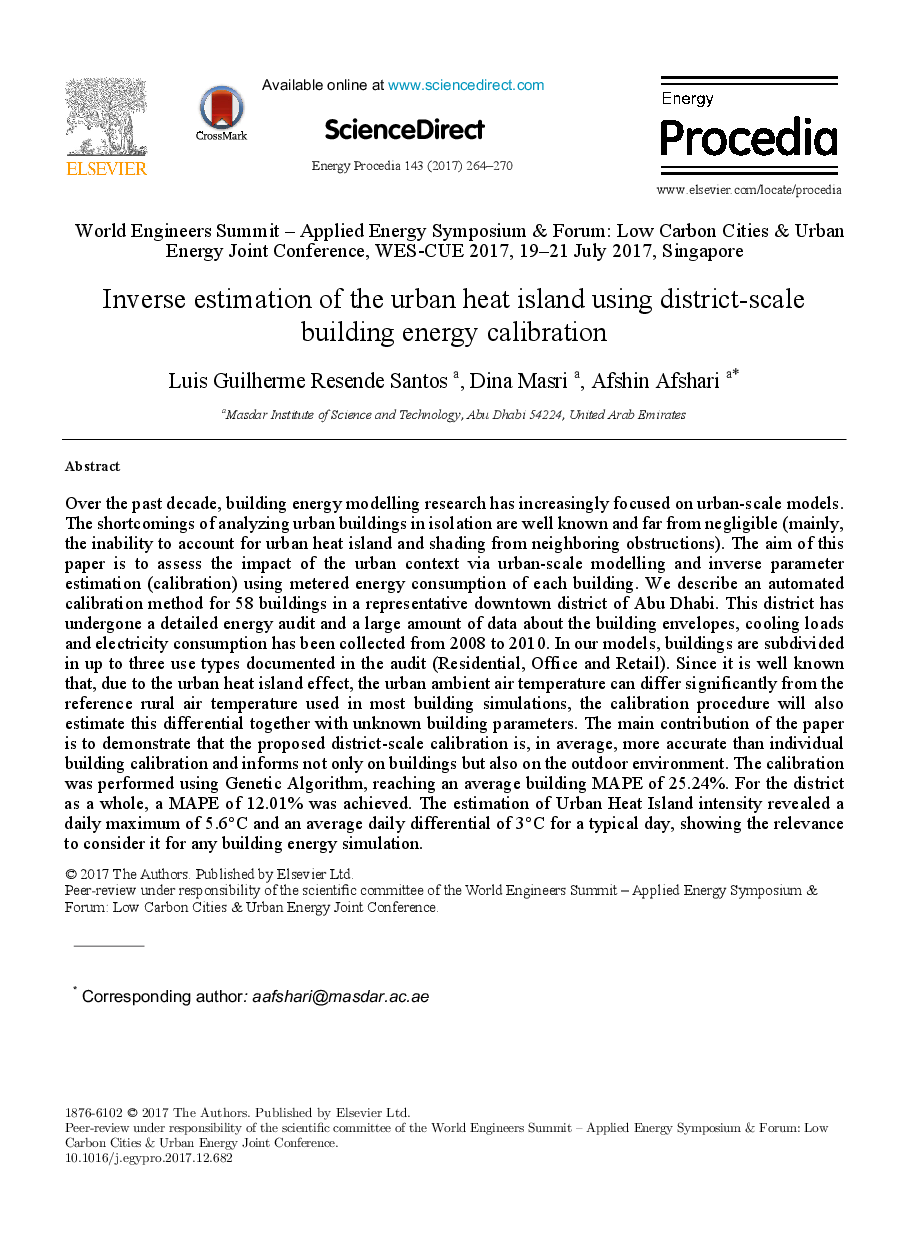ترجمه فارسی عنوان مقاله
برآورد معکوس جزیره گرمایی شهری با استفاده از کالیبراسیون انرژی ساختمان منطقه ای
عنوان انگلیسی
Inverse estimation of the urban heat island using district-scale building energy calibration
| کد مقاله | سال انتشار | تعداد صفحات مقاله انگلیسی |
|---|---|---|
| 81643 | 2017 | 7 صفحه PDF |
منبع

Publisher : Elsevier - Science Direct (الزویر - ساینس دایرکت)
Journal : Energy Procedia, Volume 143, December 2017, Pages 264-270

